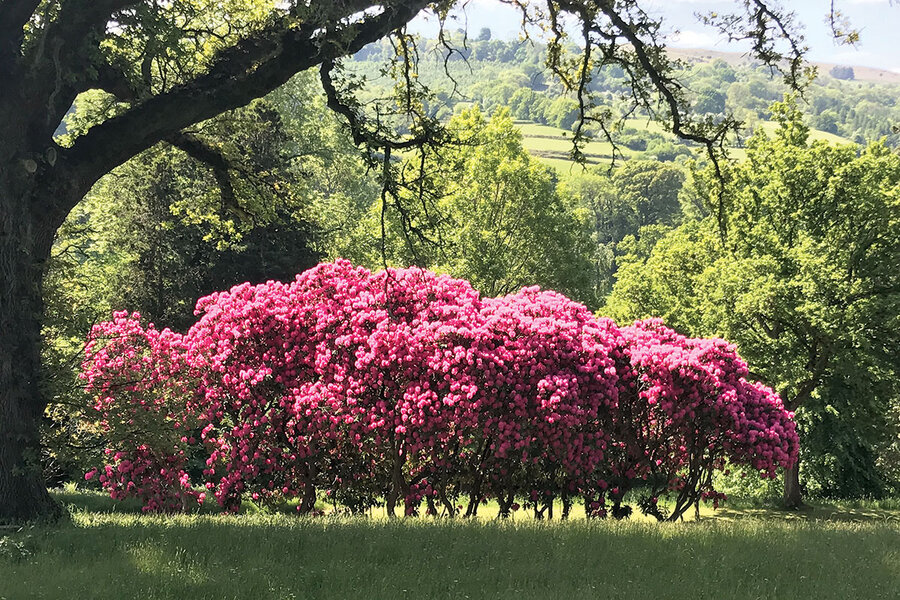Our rocky road to rhododendrons
It was June, and the wild rhododendrons were blooming.
I was in the market for a good rhody hike.
“There used to be tons of them at Plaza Lake,” my husband, Dave, said.
Plaza Lake! I’d been hearing about Plaza Lake for 40 years. It figures in a number of Dave’s stories. Or possibly it was just one story so traumatic that it splintered inside his mind into more manageable chunks.
There was the time he and his buddy tried to turn the pickup truck around and got its back end hanging off the cliff and they slithered delicately out of the cab and roped it up to a tree and set out walking in their shorts and T-shirts until it got dark and cold and they shivered in the woods all night.
Or the time they walked for 20 miles without meeting a soul before realizing they’d gone the wrong way. Bigfoot may have made an appearance.
Any way you looked at it, Plaza Lake meant Adventure.
“Let’s go to Plaza Lake,” I said.
I looked it up. It was only a short hike but a very long drive, some of it on a bumpy road. We usually prefer hiking to driving, but we were in it for the rhododendrons.
The directions suggested it was a one-hour, 45-minute drive from Portland, Ore., and that was true if by “Portland” you mean someplace nowhere near Portland, and by “one hour, 45 minutes” you mean 3-1/2 hours. And it was a “bumpy road” if what you mean by “bumpy” is “could charitably be described as lunar.”
Once we left the pavement we still had about 17 miles to go. I drove my little red car. It’s adorable, but arguably not the ideal vehicle for this trip. It has no clearance; we could conceivably high-center on a road stripe. The potholes were cavernous. The ruts could have been navigated by a gondola.
Driving my little red car on this road was like sending a ladybug across a waffle.
Our sense of adventure kicked in. Who cares how long it takes? Banana slugs passed us on the right. The miles trudged by as if borne on glaciers. Shadows lengthened. Empires rose and fell.
We didn’t see a single person. It began to occur to us that if we did get stuck, we would have no recourse but to bail out and walk for 15 miles in the waning sunlight.
We decided to try something we’d never done before: We chose discretion over valor. Two short miles from our goal, we turned around. The spot was just wide enough that we might have been seen from the air if we’d spelled out HELP in broken axles.
All the way up, our concentration on the road had been fierce. We were both tense with trepidation. I was nervous because I was driving, and Dave was nervous because – well, same reason.
But as soon as we turned around, and our survival looked like a better bet, life was rosier somehow. Or maybe it was the woods around us, which were now, unaccountably, filled with rhododendrons billowing in every direction. Not our target rhododendrons. Magic ones. A lesson in longing. A benediction in pink.






